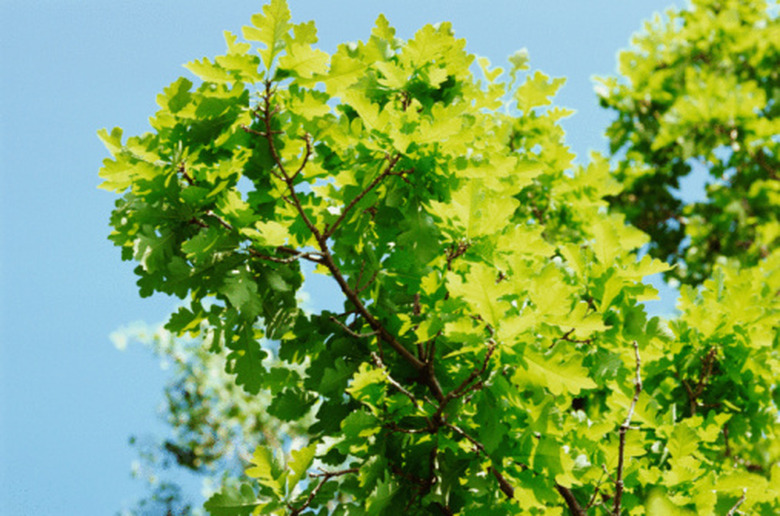Facts On The Texas Red Oak Tree
The Texas red oak tree, which grows best in U.S. Department of Agriculture hardiness zone 8, which includes states such as Texas, Georgia and Florida, is a decorative addition to any yard, due to its spring flowering habits and stature. If you are searching for a tree to include in your landscape, it's a good idea to learn more about the Texas red oak's characteristics before making a decision.
Size
Texas red oaks are medium to small trees, usually growing 30 to 50 feet tall – though some will reach as high as 75 feet. The tree has branches that naturally spread, so the width of the tree is about 60 feet in maturity.
Soil and Sun
Texas red oak trees require alkaline soil for optimum growth but are adaptable to a number of soils, as they are noticeably drought-tolerant. These trees need a planting site that receives hours of sunlight each day to support their moderate growth rate.
Flowers and Fruit
Reddish brown flowers complement the Kelly green leaves of the Texas red oak, and appear during the spring season. The flowers are actually catkins that grow between 1 and 3 1/2 inches in length. Acorns are the fruit of the Texas red oak and are a rich shade of brown tinged with red.
- The Texas red oak tree, which grows best in U.S. Department of Agriculture hardiness zone 8, which includes states such as Texas, Georgia and Florida, is a decorative addition to any yard, due to its spring flowering habits and stature.
Fall Color
The medium-sized, pronged leaves on the Texas red oak change from their bright green shade to a deep red or burgundy shade during fall. Some leaves develop a bright or burnt orange color in autumn as well.
Texas Red Oak Diseases
Texas red oak trees are susceptible to oak wilt, which is brought on by a fungus called Ceratocystis fagacearum. The disease can kill the trees and was first identified as a serious threat to oaks in 1944, according to the U.S. Forest Service. Oak wilt occurs most often in the spring and is characterized by dull leaf color, or leaves that turn yellow or brown. The Forest Service also says that there is no method for preventing oak wilt, so it's best to remove damaged branches and leaves right away.
